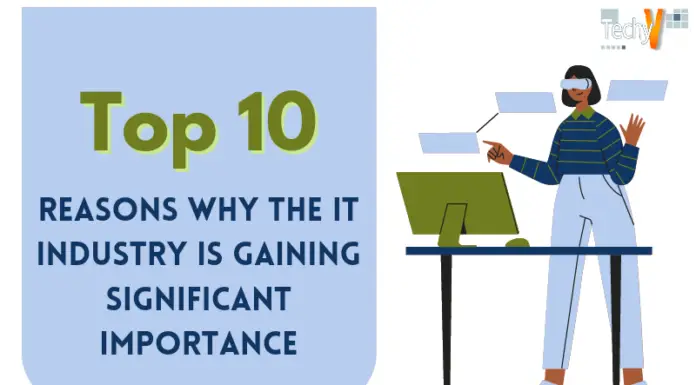Intelligent automation technologies enable the design and development of end-to- end processes that allow flexible, robust, and modern company operating models. Intelligence Automation technology (IA) is like taking a machine taught to do simple repetitive tasks, which involves adapting or correcting its performance based on changing conditions at incredible speed and scale. The Intelligent Automation process is by combining robotic process automation (RPA) with technologies like Artificial intelligence (AI), Analytics, Optical Character Recognition (OCR), Intelligent Character Recognition (ICR), and Process Mining. Hyper-automation and Intelligent Process Automation (IPA) are other words for Intelligent Automation. The top 10 Intelligent Automation technologies are in the below article.
1. Artificial Intelligence
Firstly taking a brief note on Artificial Intelligence, In the future, AI and human inventors could compete for patents; AI is speeding up slow processes and is becoming more and more inventive. Artificial Intelligence can already write articles for newspapers and can write poetry, and AI video manipulation is advancing so quickly. But AI also possesses some problems and could reshape the law as we know it. If AI comes up with a new invention, who would be responsible? ; The human that design Artificial Intelligence? Artificial Intelligence (AI) will be the most disruptive force in future developing technologies.

2. Machine Learning
Artificial intelligence (AI) applications such as machine learning allow systems to automatically learn from their experiences and get better over time without having to be explicitly designed. Supervised learning, Unsupervised, and Reinforcement learning are three types of machine learning. Machine Learning is used in many apps on our phones, including speech recognition, email filters that separate spam from legitimate emails, websites that offer personalized suggestions, banking software that looks for unusual activities, and internet search engines. Machine Learning is a crucial component for many leading business companies, like Facebook, Google, and Uber, for their business models.

3. Structured Data
Data that has been organized and formatted, typically in a database, is known as Structured Data. It; sticks to a predetermined framework or a set of guidelines, so each record remains identical to the previous one. It is easier to process structured data. Lists; of names, addresses, phone numbers, transaction histories, or social media following are a few examples of Structured Data. Machine learning is crucial because it helps companies develop new goods and provides them with a picture of trends in consumer behavior and operational business patterns.

4. Computer Vision
Computer vision is a branch of intelligent automation that enables machines to extract information from digital pictures, movies, and other visual inputs, act on that information, or provide recommendations. It; is also one of the fields of Artificial Intelligence (AI). The data obtained by computer vision is; used to drive the automated operations. Computer vision enables computers to "see," much as artificial intelligence (AI) enables computers to “think.” Computer vision systems use
Cameras to obtain visual data
Conditional logic to automate application-specific use cases.

5. Natural Language Processing
Natural Language Processing is one of the leading 10 Intelligence Automation technologies expected to dominate in 2022. The; area of Natural Language Processing combines linguistics, computer science, and artificial intelligence to study how computers and human language interact. Natural Language Processing evolved so that computers can interpret how humans talk and replicate it. Human-machine and machine-machine communication are made possible using Natural Language Processing. NLP; is a subset of Artificial Intelligence, much like Machine Learning or Deep Learning. The applications of Natural Language Processing are Speech recognition, sentimental analysis, machine translations, chatbots, etc.

6. Process Mining
Information can be extracted from event logs using Process Mining methods. Process mining methods collect data like date, time, user, activity, etc., and are stored in event logs of corporate information systems for better understanding and optimizing business processes. It reduces costs and redundancies and increases efficiency. Operating a pizza parlor and making a pizza is a simple illustration of such a process.

7. Virtual Assistants
A virtual assistant is a software application that may perform the task for users while providing several remote services to a business. It can recognize natural language voice instructions. The function of a chatbot is that of a virtual assistant; it mimics human speech and can comprehend it. A virtual assistant does not make one feel social isolation. One of the leading intelligent automation technologies in 2022 is a virtual assistant.

8. Retail And Warehouse Robots
The warehouse sector is mainly accountable for the increase in demand for robotics. The warehouse sector remarkably contributes to technological development and the growth of robotic technology. Different types of warehouse robots operated for diverse applications in the business sector. Industries that invest in robotics experience significant development in their financial performance. The most apparent results for the business sector utilizing robot technology are cost savings and increased productivity. Warehouse businesses employ such robots for various workflows since they have functional capabilities and advanced navigation
technology.

9. Robotic Process Automation
Robotic Process Automation (RPA) is a type of software that makes it simple to create, use, and manage software robots that imitate how people would interact with computers and software. Software; robots can do a wide range of predetermined activities, including understanding what is seen on the screen, making the appropriate keystrokes, navigating systems, and detecting and retrieving data, just like people can.
10. Optical Character Recognition
OCR is a technology that reads a page's text and converts those characters into code that is further used in processing the data. OCR is a process for identifying printed or handwritten text characters in digital images of paper files, such as when scanning paper records. Examples of OCR text extraction tools like converting pdf to .txt, automating data entry, extraction, and processing.




















